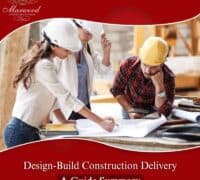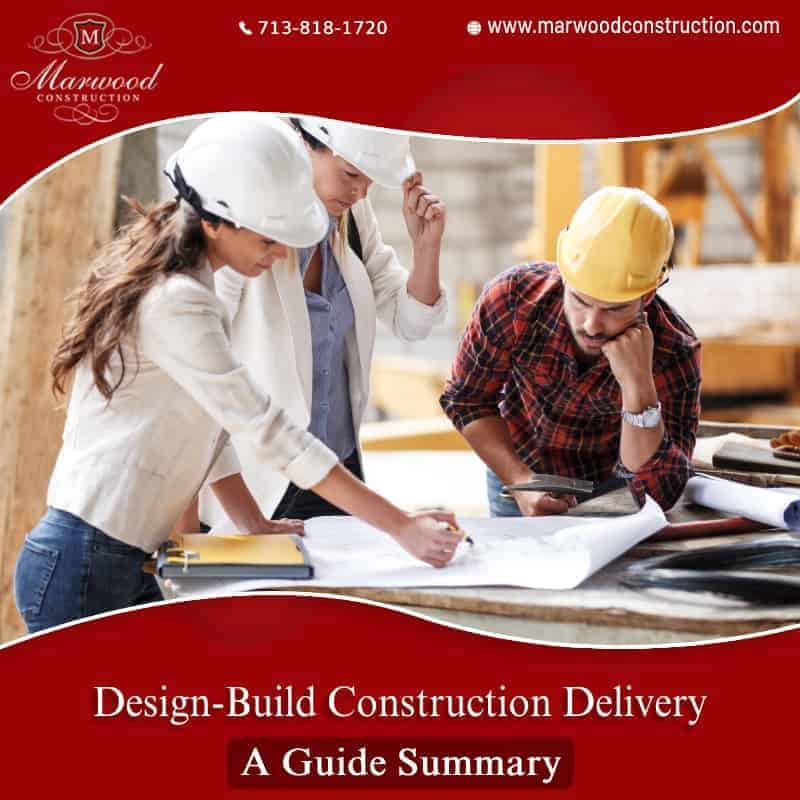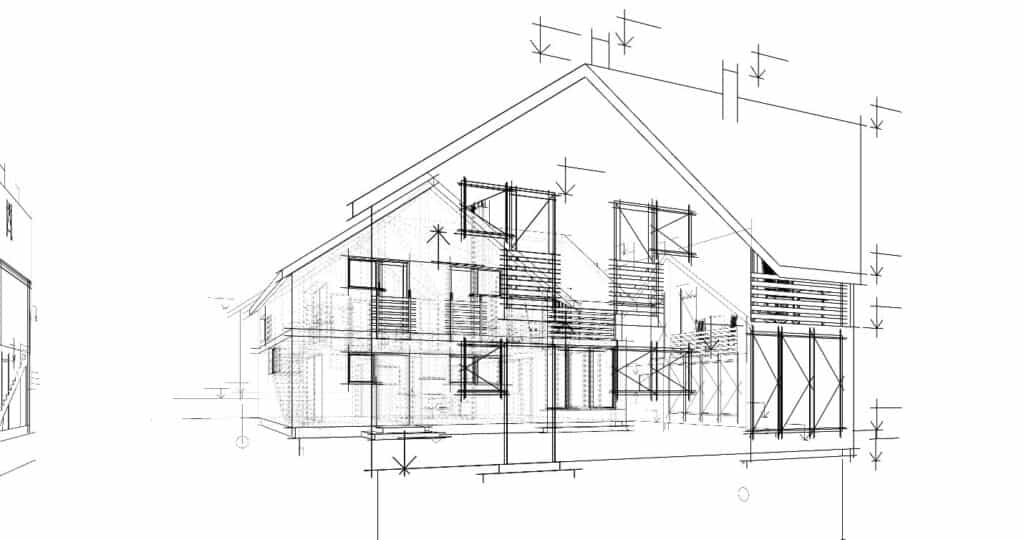
Design to build is unquestionably the most efficient construction delivery method that currently exist for designing and building or remodeling homes.
What was once considered an alternative approach in new home construction is now being implemented as the preferred home building delivery method by owners, builders and architects.
Design build construction has become a common practice and is one of the most efficient home building delivery methods that any new home builder can implement.
This method replaces the alternative conventional method referred to as the design to bid approach.
This where the owner hires an architect to prepare building plans and documents so the owner can solicit separate bids and contracts for their new home.
The design build construction method necessitates that the designers, general contractors, project owner, and subcontractors work together in a collaborating approach to complete a project from concept to completion.
Here, all stakeholders, instead of playing the blame game or pointing fingers for any lapse, work together as a team to collaborate and solve problems in the best interest of the owner.
It is an approach to create the best solutions, minimize costs, streamline schedules, and achieve both designing and building efficiencies.
You may read our comprehensive resource explaining the pros of a design build process in the construction industry.
Learn why the design to build method for construction delivery is the best overall approach
What is a design build construction delivery process?
Design build is a building delivery method for new homes and remodeling where the project owner does not have to contract separately with designers and builders, but rather hires a design build contractor as a single point of contact.
It fosters better collaboration, reduces the risk burden on the owner, and streamlines the information flow among the project stakeholders.
As opposed to other delivery methods, the design build method enjoins a structure that brings everyone together under a shared goal of achieving success for the overall project rather than that of the individual portions or phases.
It allows for the sharing of knowledge and expertise in a collaborative atmosphere rather than the traditional adversarial relationship when pitted against one another.
Importantly, the project owner deals with one person who in turn enters into dealings with other stakeholders, namely, the engineers, architects, subcontractors, etc., on behalf of the owner.
This approach is often bandied about in recent times as the optimal way to reduce the project timeline and costs.
According to a study conducted by the Construction Industry Institute comparing 350 odd projects with different delivery methods, the design build construction method was found to reduce design time and reduce total construction cost.
Here, the new home builders were accountable for all contractual risks associated with the project such as assessments, estimation, schematics, subcontracting, engineering, and construction.
In other delivery methods, the architectural process is executed separately often resulting in delays and cost overruns during the building process.
However, with the design to build method the project team gains insights into the constructability and cost of various designs resulting in a robust architectural process, a streamlined schedule, a well-defined construction cost budget.
The home builder takes upon himself the role of managing risks, executing administrative tasks, and dealing with potential legal burdens.
Importantly, even after shifting the task of project management to the house builder, the project owner does not lose control over the project.
Instead, he or she is freed up to focus on other aspects of the project.
What are the benefits of a design build delivery method?
The design to build delivery method offers a range of benefits that other delivery methods don’t. No wonder, most of the home building construction activity in recent times is done through this method. The benefits are listed below:
- Rapid project delivery as both designing and building cost estimating take place concurrently.
- Smoother process as there are no conflicting recommendations from the designer and contractor and every project stakeholder works together as one entity for the owner’s best interest.
- Better solutions and value with stakeholders bringing different ideas to the table and the team making informed decisions.
- Better communication, transparency, and collaboration to meet the project’s goals and objectives.
- Better cost savings with proper scheduling and management of activities.
What are the steps of a design build process?
A typical remodeling process has around 5 steps, which may appear to be ‘more’ considering the fact that it is a simplified process eliminating multiple steps in the traditional method.
However, it is important to know that these steps often overlap, unlike in other delivery methods where each step is performed by different entities, and often after the completion of the previous one.
A design to build process, on the other hand, is more fluid with every member working together to move things smoothly and quickly.
This delivery method process has 5 steps as follows;
1. Selecting a team:
In this phase, the project owner vets potential candidates from among a group of design build contractors and chooses a team that has the best building contracting experience and understands the project’s requirements, budget, and vision.
The goal is to select the most like-minded house builder out of the small collection of professional and qualified candidates.
The architectural team usually includes the general contractor, the engineer, and the architect.
In lesser situations, the owner may ask an interior decorator to contribute to the creation of the dwelling.
Although cost is an important criterion to be taken into consideration, although it should not always be the determining factor, as the goals of the process are based on skills and experience.
Moreover, the value of this process is advantageous to every stakeholder; architects, home builder, and project owners.
This is because the designers and house builder’s contribution are based upon their skill level resulting in a superior quality project at substantially reduced risk factors for the owner.
The selection process of the designer and home building contractor may overlap in the next preconstruction step where the team is expected to do considerable research of the home building site.
2. Preconstruction:
This may appear to be a smaller step compared to the other steps of the process, which nevertheless is critical due to its attention to detail.
Here is when the design team learns about the owner’s lifestyle, vision, targeted budget, and the challenges associated with the project.
During this step, the owner should ask umpteen questions to clarify each aspect of the project and get a picture of things to be expected.
In this step or phase, the team works collaboratively to assess the site, utilities, trees, topography and other essentials, to determine the factors that influence the design and construction before architectural process begins.
3. Architectural design:
The architectural process commences once the project parameters are defined including the owners research and interior feature elements, architectural preferences, building lot and target budget.
In fact, some of the architectural design work may have already begun during the pre-construction phase.
In this step, the team members collaborate to come up with the best designs by keeping the parameters in mind.
The team makes assessments for optimizing productivity, saving costs, meeting style preferences, and addressing the functional requirements.
Thereafter, preliminary drawings, pricing estimates, and final targeted budget are presented to the project owner.
Once the initial concept drawings are agreed upon, the project schedule is developed and the preliminary building costs are calculated and confirmed with the targeted budget.
Moreover, since the designer and premier builder are on the same page vis-a-vis the drawings, the project need not entail any further changes.
The drawings would then go to the engineers for engineering plans and the designer would complete the final plans ready for permitting. In case you want to see some of the LEED-certified homes with design build contractors, view our video.
4. Construction:
After the home plans and engineering are finalized for permitting, the home builder selects the subcontractors and suppliers for the project and begins the new home construction process.
This approach also minimizes the need for non-elective change orders, while contributing to construction cost controls.
And even though there may be unforeseen building document challenges faced during the contracting phase the fact that the design team has been working as one unit from the beginning fosters a solution focus resolution to the challenges effectively.
The contracting work progresses smoothly as there is seamless communication established across the value chain and a single point of contact selected for every activity.
Further, there is better accountability as everyone in the design team works towards meeting the same goals, objectives, and deadlines.
5. Postconstruction:
New home building must be approved by the local municipalities through compliance inspections.
Once final inspection is done and after substantial completion of the home renovation or new house building is achieved the home builder can produce the project construction as built documents to the owner for future reference.
Conclusion
The collaborative delivery method has certainly many advantages over traditional construction delivery methods in terms of accelerated schedule, seamless communication, cost savings, minimal change orders, and others.
However, notwithstanding the benefits, the project owner should take time to select the right design build contractor having the experience, expertise and similar project vision for the best home building results.
You may read a blog to know further how the design build construction delivery method is markedly better than other methods and why should you choose it for your project.













